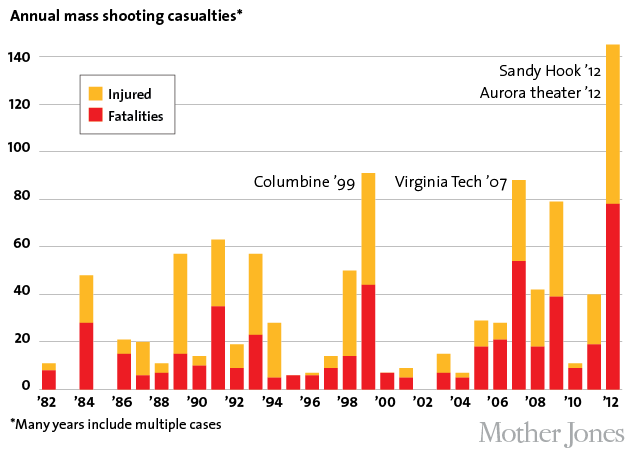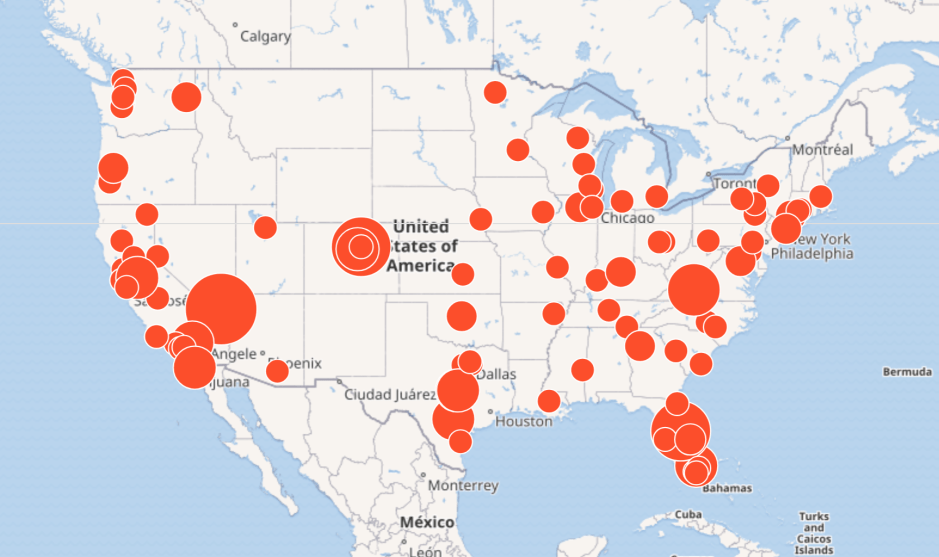Since 2009, the NRA and its allies in state capitols have pushed through 99 laws making guns easier to own, easier to carry in public—eight states now even allow them in bars—and harder for the government to track. More than two-thirds of the laws were passed by Republican-controlled legislatures, though often with bipartisan support. (Note: Click on the colored states for details on additional laws; info on a few particularly noteworthy ones follows below the map. Also see our related story on the frightening rise of mass shootings in the US.)
99 Laws Rolling Back Gun Restrictions, 2009-2012
- Easier to Carry
- Easier to Own
- Harder to Track
- Carry in Bars
- All 99 Laws
- GOP or Dem?

Some particularly noteworthy laws:
- Bullets and booze: In Missouri, law-abiding citizens can carry a gun while intoxicated and even fire it if "acting in self-defense."
- Child-safety lock off: In Kansas, permit holders can carry concealed weapons inside K-12 schools and at school-sponsored activities.
- Short arm of the law: In Utah, a person under felony indictment can buy a gun, and a person charged with a violent crime may be able to retain a concealed weapon permit. Nebraskans who've pled guilty to a violent crime can get a permit to carry a gun.
- Sweet Jesus! In Louisiana, permit holders can carry concealed weapons inside houses of worship.
- Without a trace: Virginia not only repealed a law requiring handgun vendors to submit sales records, but the state also ordered the destruction of all such previous records.
For more, see our related investigation on the rise of guns and mass shootings in America.
Sources: The majority of the data used for this map is from the Law Center to Prevent Gun Violence, with additional research by Mother Jones. You can get further details about the laws, by year, on LCPGV's site: 2009-10, 2011, and 2012.
Additional research contributed by Deanna Pan and Gavin Aronsen.

















